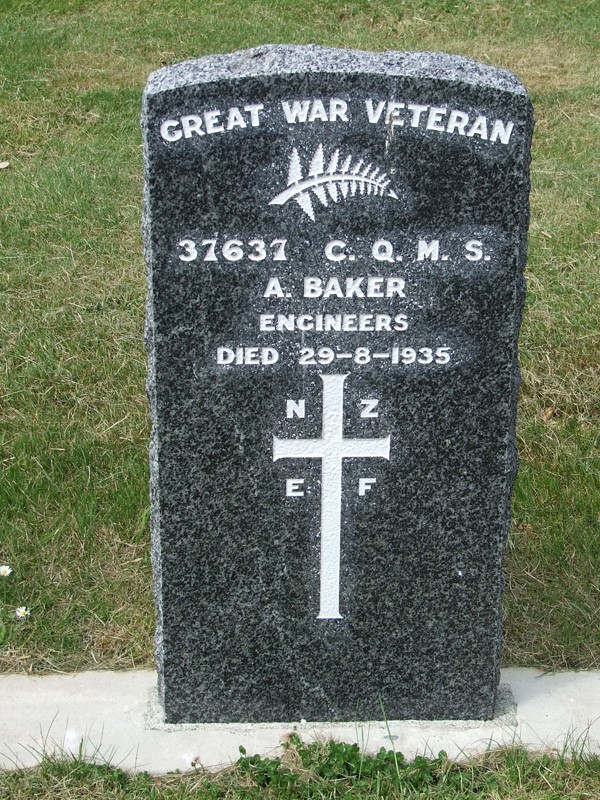Albert Baker was born in Wellington on 2nd September 1873 to Edmund John Baker (an expressman from Somerset, England), and Frances Ann Styles (from Whanganui). The family lived in Austin St Wellington. He became a gold miner, and by 1898 was living in the Coromandel.
On 8th March 1898, Albert was charged with attempting to leave the colony without making provision for his unborn child. He was brought before the magistrate who held him in custody to give him the opportunity to marry the girl he had got pregnant. The magistrate had advised that if Albert produced the marriage certificate, no further proceedings would be taken. On 15 March 1898, Albert married Evelina (known as Evelyn/Evelyne) May Milne.
Their daughter Frances was born in Thames in 1898, sadly she lived only a few months.
Albert and Evelyn went on to have a further 6 children between 1899 and 1912, 3 of whom survived: Edmund (born 1899), Evelyn (born 1905) and Felix (born 1909).
In 1899 Albert applied for a license to mine a special quartz claim at Moanataiari Creek, Thames, and proposed to call it the Freedom Special Quartz claim. He had marked it out with pegs on 14th June 1899.
In 1903 Albert and Evelyn were living in Reefton and in July 1903 Albert was elected to the committee of the Inangahua Miners Union. He also became involved with the local fire brigade and was appointed as the Lieutenant Commander of the Reefton Rifle Volunteers.
In April 1916 Albert was appointed the foreman of the Waiuta mine.
In March 1917 he signed up to join the Tunnelling Corps, and it was announced that he had been accepted to leave for the Narrow Neck Camp in Auckland, where he would join the Tunnelling Corps.
He left Reefton on the 20 March with a number of other men from Blackball, Reefton and Cobden. He was quickly promoted to Corporal and then to Company Quartermaster Sergeant.
Albert embarked on the Turakina on 26 April 1917 bound for Plymouth Devon. However, while en route, Albert suffered from a hernia that required him to be admitted to hospital at sea for surgery. He had to disembark at Sydney and was transferred to the base hospital. He was made to stay in hospital for 3 weeks. It was found that he had chronic eczema on both feet.
Albert spent some time convalescing in Sydney but it was determined that he was no longer fit for duty so was transferred back to New Zealand on the S.S. Reverina. He was discharged from service on 3rd September 1917.
Albert went on to work as a gasworker, then a labourer, and lived with Evelyn in Miramar, Wellington.
On 29th August 1935 Albert died from pneumonia and sclerosis of the lung, an illness common amongst miners and likely caused by quartz dust.
Evelyn died in 1954 and was cremated at Karori Cemetery. A number of Albert’s family, including his mother, brothers and sister are buried in Karori Cemetery in Public 2/N/115.


